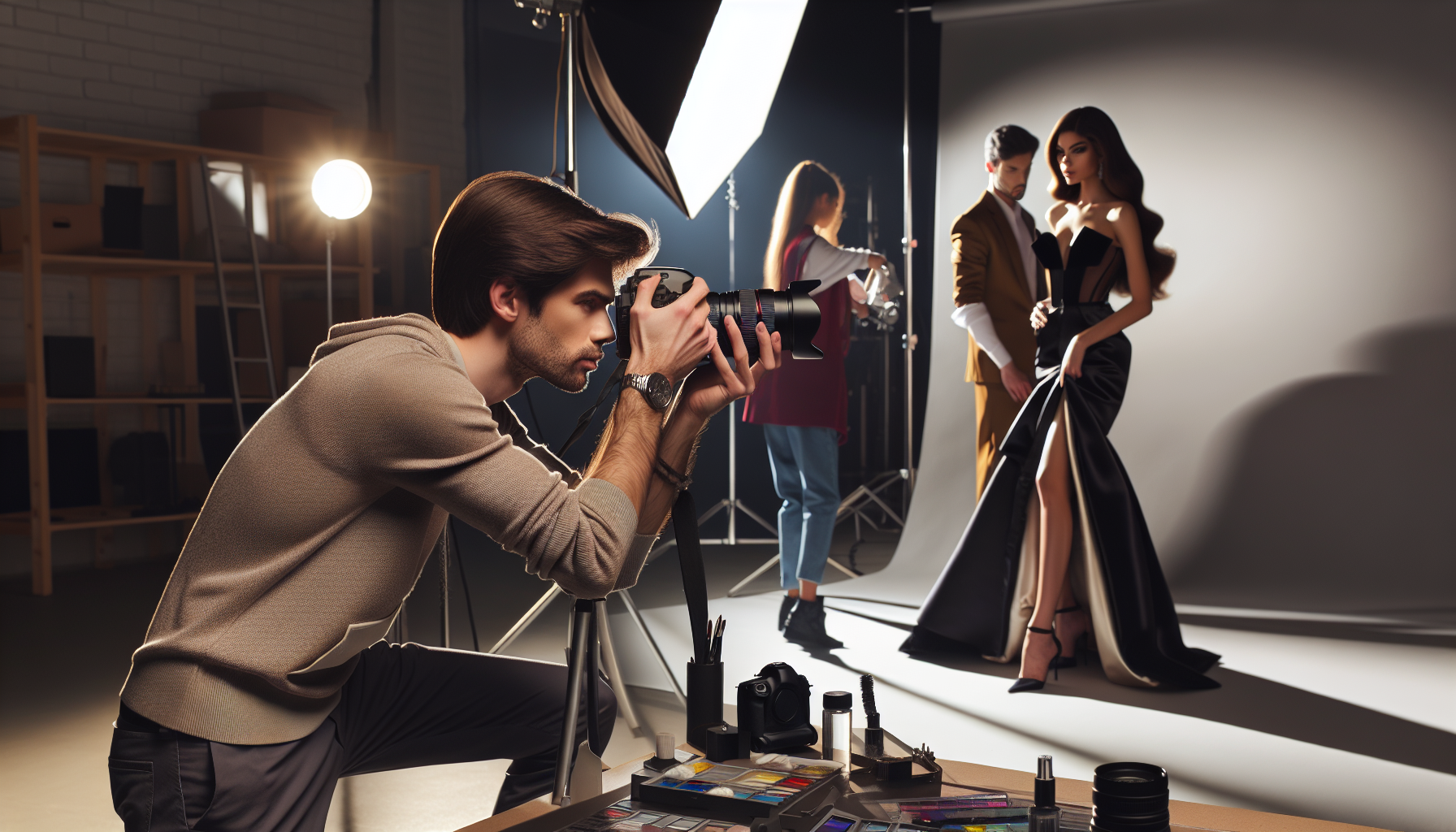
Fashion photography is about more than just showcasing clothes; it’s about crafting a visual story, evoking emotions, and setting a mood. In today’s visually saturated world, standing out requires more than perfect lighting and a stunning model. This is where special effects come into play. They are the secret ingredient that can elevate a good fashion photograph to an unforgettable, brand-defining image. From subtle atmospheric enhancements to bold, surreal manipulations, special effects offer a vast toolkit to photographers and creative teams seeking to push boundaries and captivate audiences. Mastering these techniques is not just about technical skill; it’s about understanding how to use them to enhance the narrative and resonate with viewers on a deeper level.
This guide is designed for photo editors and designers looking to understand and effectively utilize special effects in fashion photography. We’ll explore a range of techniques, from in-camera tricks to post-production mastery, providing you with the knowledge to inject creativity and impact into your fashion imagery. Whether you’re aiming for a dreamy, ethereal vibe, a gritty, urban edge, or a futuristic, high-fashion statement, understanding and applying special effects opens up a world of possibilities.
Key Takeaways:
- Special effects enhance storytelling: They are not just visual gimmicks but powerful tools to communicate mood, brand identity, and narrative.
- In-camera effects offer authenticity: Techniques like lens filters, creative lighting, and practical effects add a unique, organic feel to images.
- Post-production expands creative possibilities: Digital tools allow for intricate manipulations and enhancements, offering limitless creative control.
- Understanding the brand is crucial: The choice of special effects should always align with the brand’s aesthetic and target audience.
- Subtlety can be impactful: Special effects don’t always need to be dramatic; even subtle enhancements can make a significant difference.
- Collaboration is key: Effective use of special effects often involves collaboration between photographers, stylists, and post-production teams.
- Efficiency matters in e-commerce: Especially for e-commerce, streamlined workflows and efficient post-production are essential for handling large volumes of images while maintaining quality.
Harnessing Light and Shadow
Light is the cornerstone of photography, and manipulating it creatively can produce some of the most compelling special effects. It’s not just about illuminating the subject; it’s about shaping the mood and atmosphere. Consider the use of dramatic side lighting to create stark shadows that add depth and mystery, or the soft, diffused light of golden hour to impart a warm, romantic glow. Experimenting with different light sources, from hard direct flash to softbox diffusion, can drastically alter the image’s feel.
One technique is using gobos (go-betweens or patterns projected by optics) to project shapes and patterns of light and shadow onto the model and background. These can range from simple windowpane patterns to intricate foliage designs, adding visual texture and interest. Gobos can be created using stencils placed in front of a light source, or through specialized lighting equipment.
Another powerful technique involves colored gels. Placing colored gels over studio lights allows you to bathe your scene in vibrant hues. Using contrasting colors, like a blue gel on one light and a red gel on another, can create dynamic and visually striking portraits. Subtler gel use, like warming gels to enhance skin tones or cooling gels to create a more dramatic atmosphere, can also be very effective.
Case Study: Atmospheric Lighting for a Luxury Brand
Consider the work of fashion photographer, Anya Petrova, known for her campaigns with high-end brands. For a recent campaign for “Elysian Silk,” a luxury clothing brand focused on evening wear, Anya utilized dramatic lighting to evoke sophistication and glamour. She employed a combination of hard and soft light, strategically placed to sculpt the models and highlight the flowing fabrics. A key element was the use of subtle backlighting, which created a halo effect around the models, separating them from the background and adding a touch of ethereal elegance. Anya also used narrow beams of light to create dramatic shafts in the background, adding depth and visual interest without overpowering the garments. This lighting style perfectly complemented Elysian Silk’s brand identity, reinforcing the luxury and sophistication of their clothing line. The post-production was then handled by Pixel By Hand, who ensured color accuracy and consistency across all images, further enhancing the polished and high-end feel of the campaign.
Expert Opinion: The Power of Light Shaping
“Light is my primary tool for creating mood and drama,” says renowned fashion photographer, David Miller. “I often spend more time setting up my lighting than actually shooting. Understanding how different light modifiers, like umbrellas, softboxes, and reflectors, affect the quality of light is crucial. Don’t be afraid to experiment with unconventional light sources too – natural window light, car headlights, even candlelight can bring a unique dimension to your fashion photography.” David emphasizes the importance of observing light in everyday life and learning how to recreate those effects in a controlled studio environment.
Playing with Perspective and Composition
Beyond lighting, perspective and composition are powerful tools for creating special effects. Changing your shooting angle can drastically alter the viewer’s perception of the subject and the scene. Shooting from a low angle can make the model appear taller and more powerful, while a high angle can create a sense of vulnerability or detachment.
Lens Effects
The lens you choose plays a crucial role in the final image. Wide-angle lenses can exaggerate perspective, making objects closer to the lens appear larger and those further away smaller. This can be used to create dynamic fashion shots with a sense of movement and energy. Conversely, telephoto lenses compress perspective, making distant objects appear closer together. This can be useful for isolating the model and creating a more intimate portrait feel.
Depth of Field Manipulation
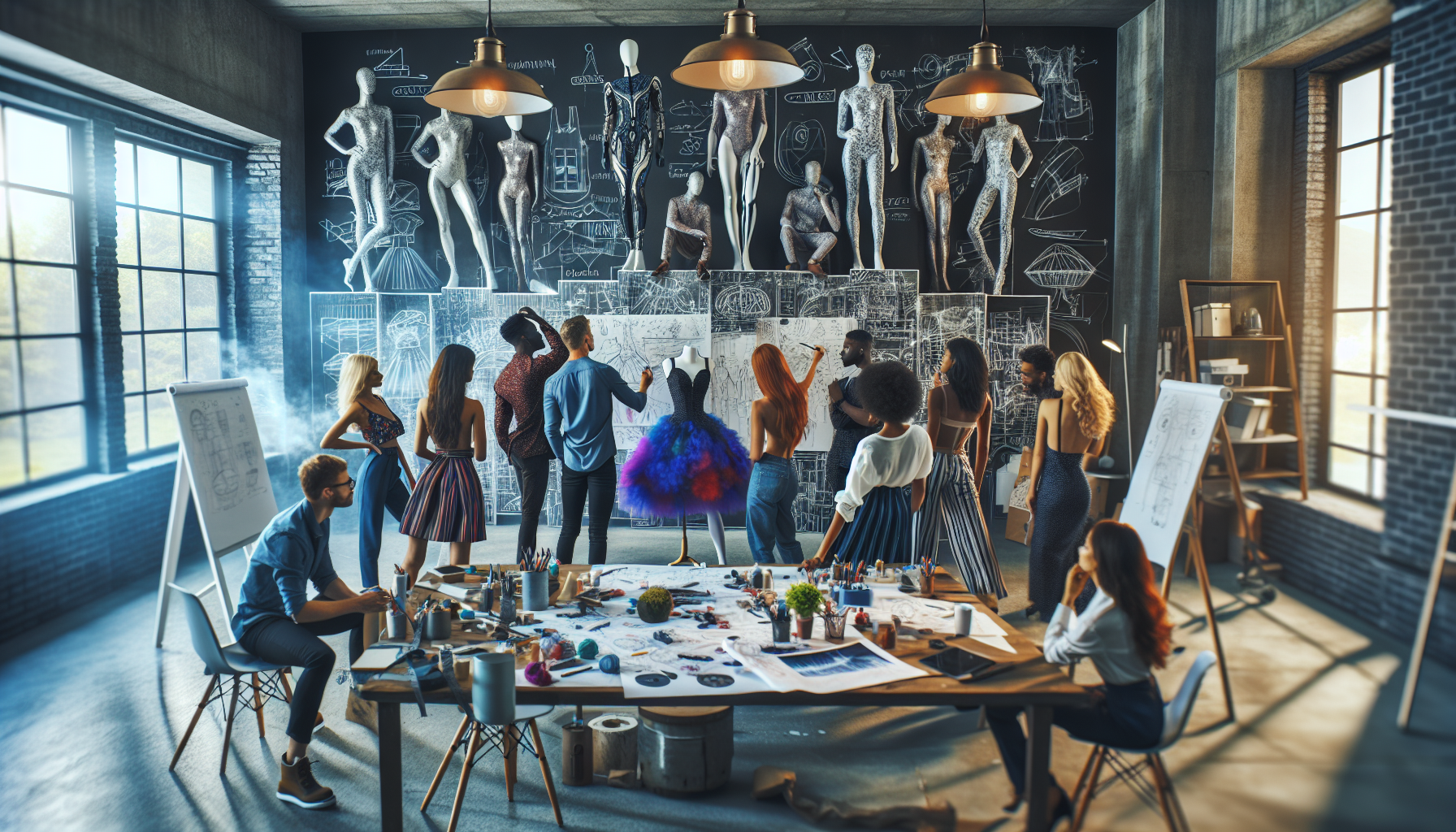
Controlling depth of field is another key compositional technique. A shallow depth of field, achieved by using a wide aperture (like f/2.8 or wider), blurs the background, drawing focus solely to the model and the clothing. This is ideal for emphasizing the details of the garment and creating a sense of intimacy. A deep depth of field (achieved with a narrow aperture like f/8 or smaller), keeps both the foreground and background sharp, providing context and showcasing the environment. This can be effective for editorial shots where the location and setting are integral to the story.
Creative Cropping and Framing
Consider unconventional cropping techniques to add visual interest. Instead of always centering your subject, try placing them off-center according to the rule of thirds, or even cropping in tightly to focus on a specific detail of the garment or model’s features. Using natural elements in the environment to frame your subject, like doorways, arches, or foliage, can also add depth and visual layers to your compositions.
Utilizing Practical Effects: Wind, Water, and Smoke
Practical effects are those created physically during the photoshoot, rather than added digitally in post-production. These can add a sense of realism and spontaneity that is often difficult to replicate artificially.
Wind Effects
Wind machines are a fantastic tool for adding dynamism and movement to fashion photography. Wind can create flowing fabrics, tousled hair, and a sense of energy and drama. Experiment with different strengths of wind and angles to achieve various effects. A gentle breeze can create subtle movement, while a strong gust can produce dramatic, windswept looks. Consider the fabric of the garments when using wind; lighter fabrics like silk and chiffon will move more dramatically than heavier materials like denim or leather.
Water Effects
Water can be used in a multitude of ways to create stunning special effects. Rain machines can simulate realistic rain, adding drama and atmosphere to outdoor fashion shoots. Splashing water can create dynamic movement and energy, especially when captured with fast shutter speeds to freeze the droplets in mid-air. Shooting in or near water bodies like pools, lakes, or the sea offers reflective surfaces that can add depth and surreal qualities to images. Underwater photography opens up a whole new world of creative possibilities, although it requires specialized equipment and safety precautions.
Smoke and Fog Effects
Smoke machines and fog machines are relatively inexpensive and incredibly effective for adding atmosphere and mystery to fashion photography. Smoke can create a hazy, dreamlike quality, or be used to add dramatic shafts of light when combined with studio lighting. Fog can create a sense of depth and separation, especially in wide shots, and can be used to simulate misty or foggy environments. Experiment with different types of smoke and fog fluids to achieve varying densities and colors. Always ensure proper ventilation when using smoke or fog machines in enclosed spaces.
Case Study: Using Practical Effects for an Urban Edge
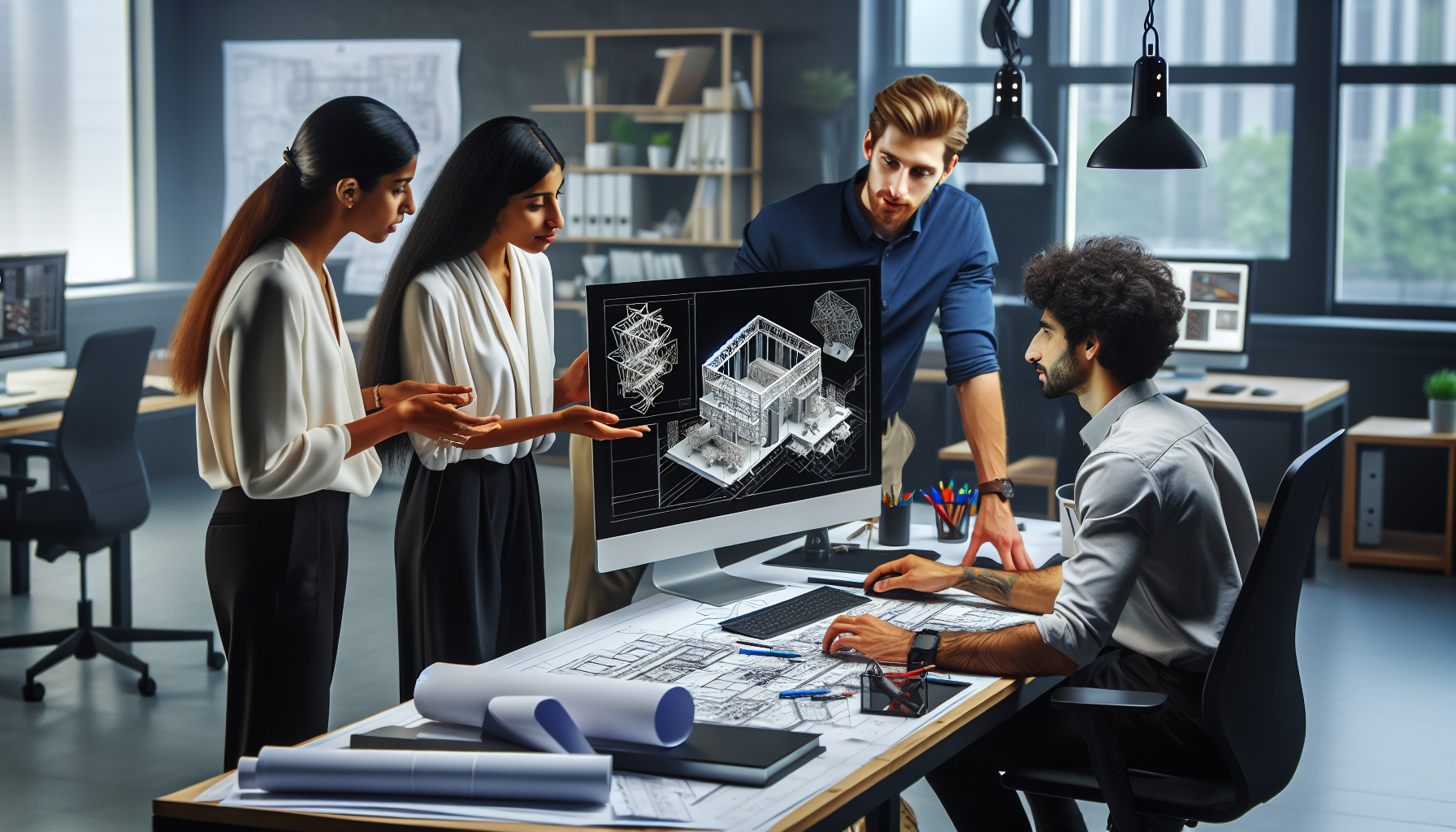
Photographer Jordan Williams is known for his gritty and urban fashion photography style. For a campaign for “Concrete Canvas,” a streetwear brand, Jordan heavily relied on practical effects to create a raw and authentic feel. In one striking image, Jordan used a combination of wind and rain machines to capture a model wearing a denim jacket, battling against a simulated downpour. The wind whipped the model’s hair and jacket, creating dynamic lines and a sense of struggle, while the rain added a layer of realism and urban grit. For another shot, Jordan used a smoke machine to create a hazy atmosphere in a back alley location, lending a sense of mystery and intrigue to the image. These practical effects, combined with Jordan’s signature shooting style, perfectly captured the edgy and urban aesthetic of the Concrete Canvas brand. The raw files were then passed to Pixel By Hand for post-production refinement, where the team ensured that the gritty aesthetic was maintained while optimizing image quality for e-commerce platforms.
Post-Production Magic: Digital Enhancements and Manipulation
While in-camera and practical effects offer a unique authenticity, post-production opens up an even wider realm of creative possibilities. Digital editing software like Adobe Photoshop and Capture One provide tools to refine, enhance, and even completely transform fashion photographs.
Color Grading and Toning
Color grading is one of the most impactful post-production techniques for setting mood and style. Adjusting color balance, hue, saturation, and luminance allows you to create a specific color palette that aligns with the brand’s aesthetic and the desired emotional response. Warm tones (reds, yellows, oranges) can evoke feelings of happiness, energy, and warmth, while cool tones (blues, greens, purples) can suggest calmness, sophistication, or mystery. Monochromatic color grading, using variations of a single color, can create a very stylized and impactful look. Split toning, applying different colors to the highlights and shadows, can add depth and complexity to the color palette.
Retouching and Skin Enhancement
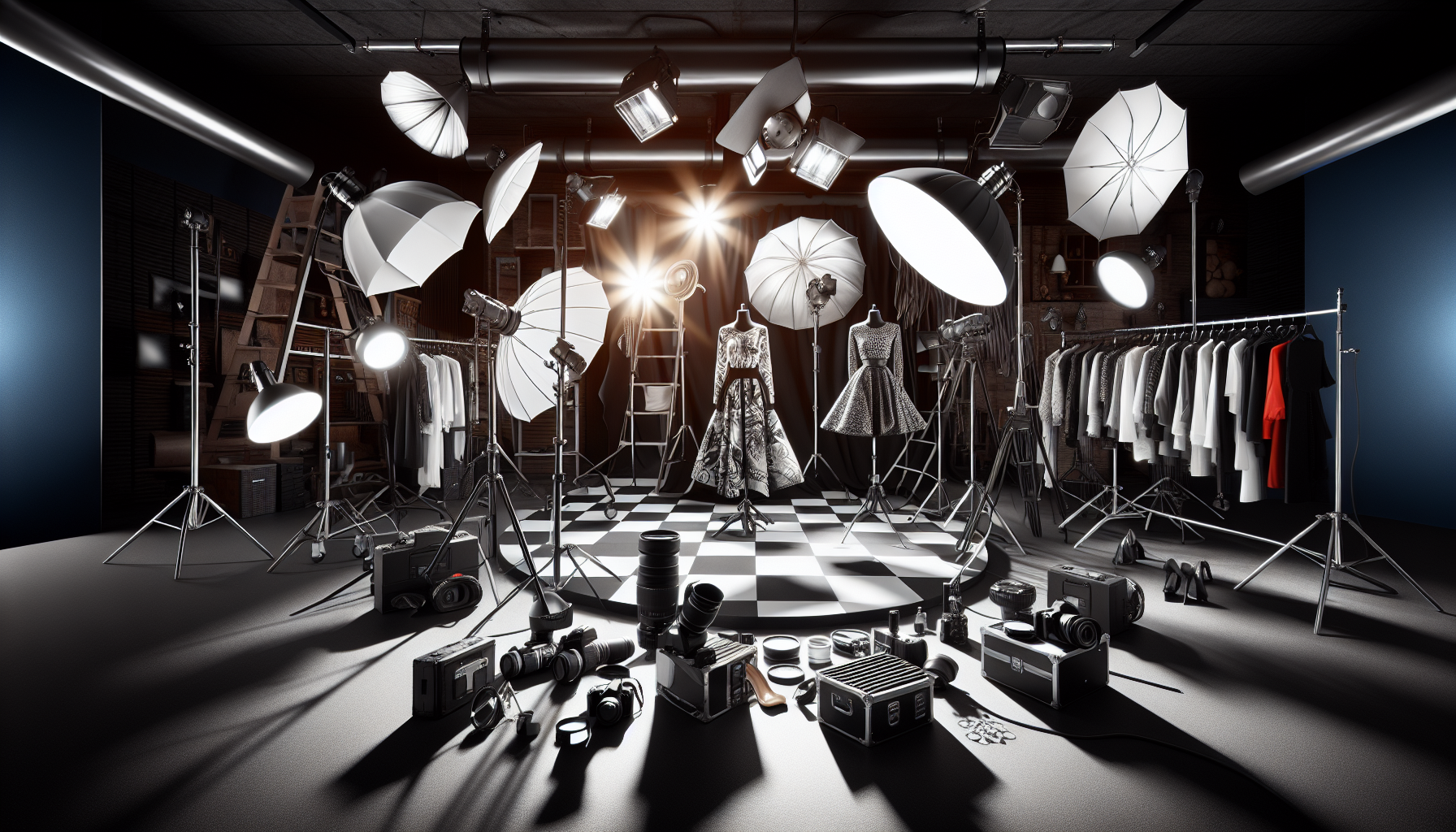
In fashion photography, retouching is often used to refine skin texture, remove blemishes, and enhance features. However, the key is to retouch tastefully and realistically, maintaining the model’s natural beauty while ensuring a polished and professional look. Frequency separation is a popular advanced retouching technique that allows for targeted adjustments to skin texture and color separately, providing greater control and natural-looking results. Dodge and burn techniques, lightening and darkening specific areas of the image, can be used to sculpt features and enhance dimension. Pixel By Hand specializes in high-volume image retouching, ensuring consistent and high-quality results while adhering to brand guidelines and maintaining efficiency.
Adding Digital Effects
Beyond basic adjustments, post-production software allows for the addition of various digital effects. Double exposure, blending two or more images together, can create surreal and artistic compositions. Motion blur can be added digitally to simulate movement and energy, even in static shots. Texture overlays, adding layers of textures like grunge, paper, or fabric, can add visual interest and depth. Creative filters and plugins can be used to achieve unique stylistic effects, but should be used judiciously to avoid overpowering the core image.
Expert Opinion: Ethical and Creative Post-Production
“Post-production is not about fixing mistakes; it’s about enhancing the creative vision,” states renowned retoucher, Eleanor Vance. “Ethical retouching is crucial in fashion. It’s about refining, not redefining. We should aim to enhance the beauty that’s already there, not create an unattainable ideal. Creatively, post-production offers limitless possibilities, but it’s important to use these tools thoughtfully and intentionally, ensuring that the effects serve the overall narrative and brand message.” Eleanor advocates for a collaborative approach between photographers and retouchers, where the post-production process is integrated into the creative vision from the outset.
Case Study: Surreal Post-Production for High Fashion
For a recent editorial spread in “Avant-Garde Fashion Magazine,” photographer Marcus Chen collaborated with digital artist, Clara Dubois, to create a series of surreal and dreamlike images. Marcus focused on capturing strong compositions and dynamic poses in-camera, while Clara took the images into post-production to add fantastical elements. In one image, Clara used advanced compositing techniques to seamlessly blend the model into a landscape of floating clouds and surreal architectural structures. In another, she used color manipulation and texture overlays to create an otherworldly, almost painterly effect. These heavily manipulated images pushed the boundaries of fashion photography, creating a visually stunning and conceptually rich editorial that perfectly aligned with Avant-Garde Fashion Magazine’s progressive and artistic ethos. While Pixel By Hand typically focuses on e-commerce retouching, their understanding of color consistency and high-quality output makes them valuable partners for ensuring that even highly stylized and manipulated images maintain technical excellence for online display and brand consistency.
Workflow Efficiency and Scaling with Special Effects
For e-commerce fashion businesses, especially those like Sarah, the E-commerce Operations Manager in our ICP, efficiency and scalability are paramount. While special effects can significantly enhance product imagery, it’s crucial to integrate them into a streamlined workflow that can handle high volumes of images without compromising quality or deadlines.
Planning and Pre-Production
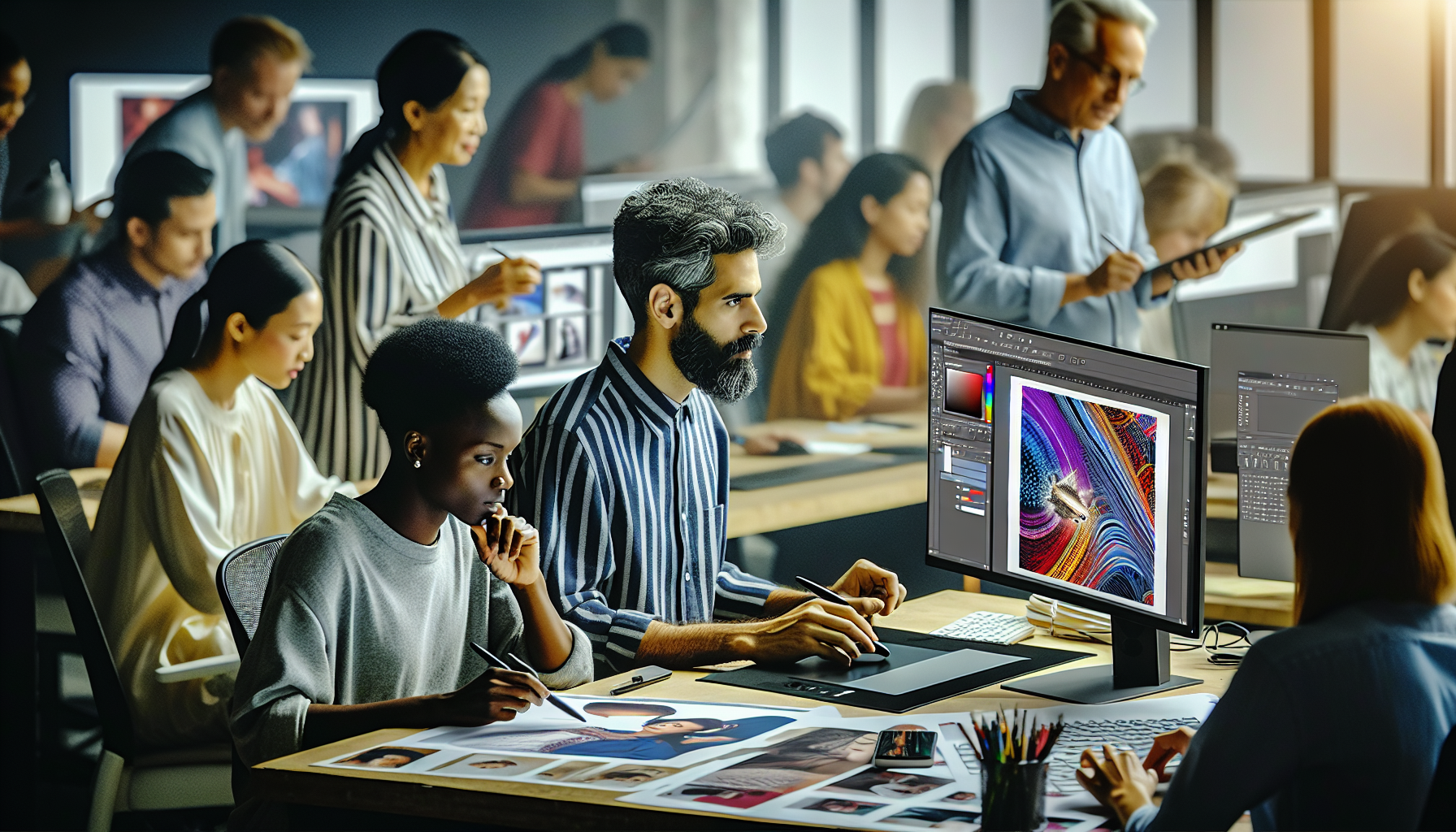
Efficient use of special effects starts with careful planning and pre-production. Clearly define the desired aesthetic and special effects for each photoshoot. Develop style guides and templates to ensure consistency across all images. Communicate clearly with the photography and post-production teams to ensure everyone is aligned on the creative vision and technical requirements. For Pixel By Hand clients, this initial consultation and style guide creation is a key part of their onboarding process, ensuring tailored and efficient post-production workflows.
Batch Processing and Automation
Leverage batch processing and automation tools within post-production software to streamline repetitive tasks. Create Photoshop Actions or Capture One Styles to apply consistent color grading, retouching, and effects to large batches of images. Explore AI-powered tools for tasks like background removal and basic retouching to further accelerate workflows. Pixel By Hand’s proprietary platform and custom workflow solutions are specifically designed to maximize efficiency for high-volume e-commerce image processing.
Outsourcing Post-Production
Consider outsourcing post-production to specialized services like Pixel By Hand. Outsourcing can significantly reduce turnaround times, ensure consistent quality, and free up internal resources to focus on other critical tasks. Pixel By Hand’s experienced team and streamlined processes are built to handle the demands of high-volume e-commerce fashion photography, delivering quality and efficiency at scale. For Sarah, outsourcing to a reliable partner like Pixel By Hand addresses her challenges of managing large volumes, maintaining consistent quality, and optimizing costs, allowing her to focus on scaling her operations and meeting her ambitious launch cycles.
Special effects in fashion photography are more than just visual enhancements; they are powerful storytelling tools that can elevate brand imagery, evoke emotions, and captivate audiences. From mastering in-camera techniques like creative lighting and practical effects to harnessing the transformative power of post-production, the possibilities are vast. For photo editors and designers in the e-commerce fashion industry, understanding and strategically utilizing special effects is key to creating compelling visuals that drive engagement and sales. By combining creative vision with efficient workflows and leveraging expert post-production services like Pixel By Hand, fashion brands can consistently deliver high-quality, impactful imagery that stands out in a crowded digital marketplace.
Are you ready to experience the latest special effects in fashion photography? Pixel by Hand offers a FREE TRIAL that lets you explore the latest solutions.
Why wait?
✅ No commitment
✅ Instant access
✅ Transform your business today
Sign up now and see why professionals are choosing Pixel by Hand to stay ahead of the curve. Your journey to smarter work starts here!